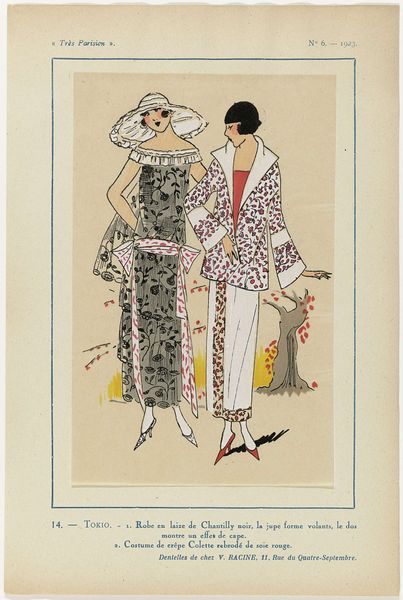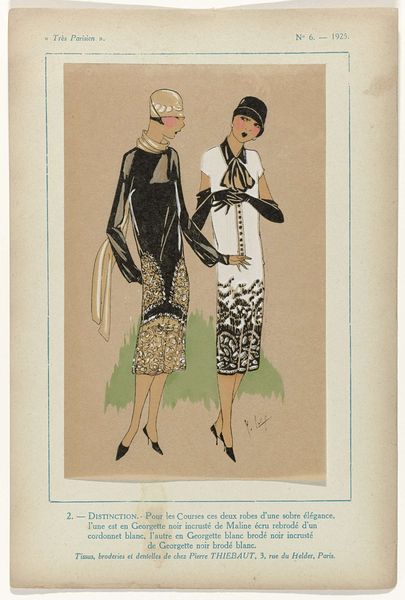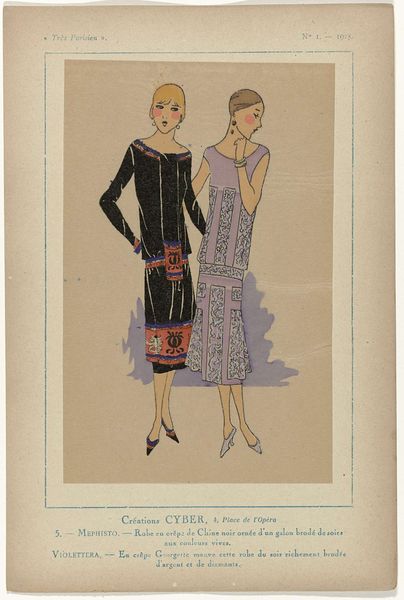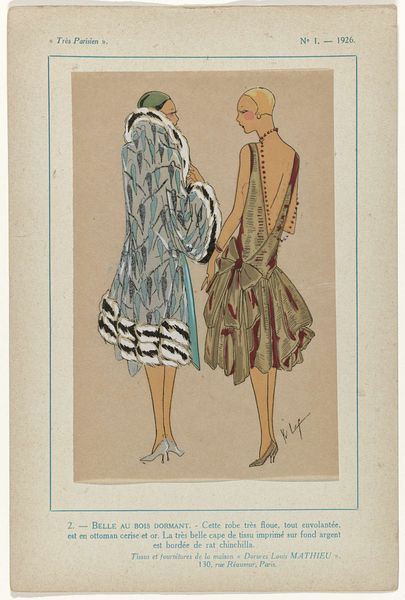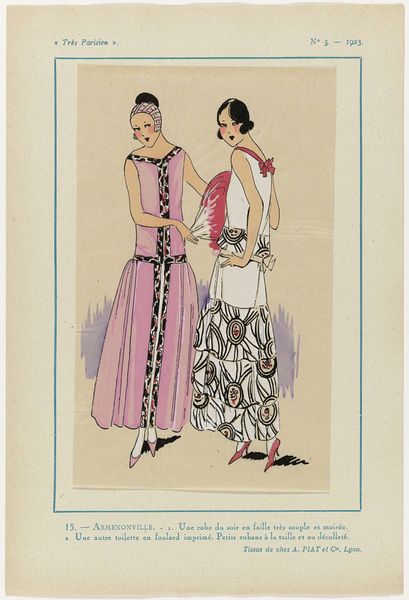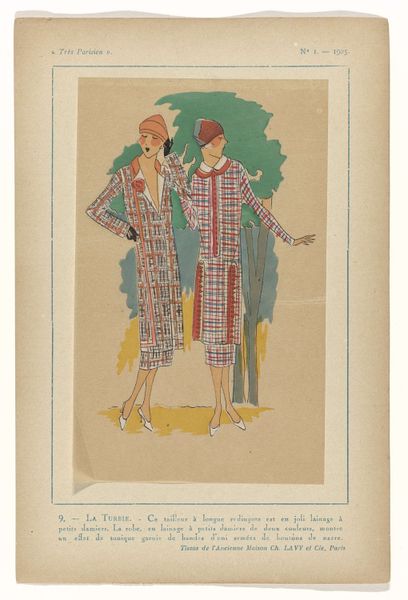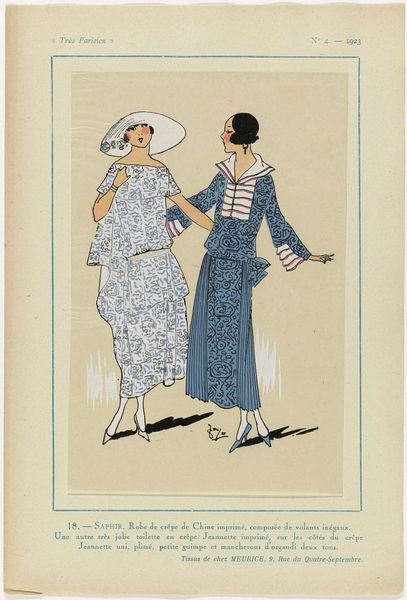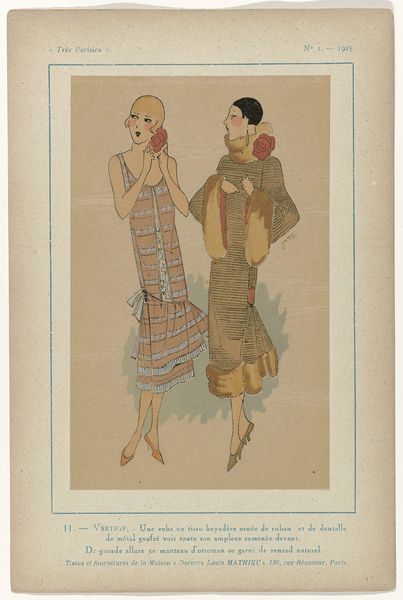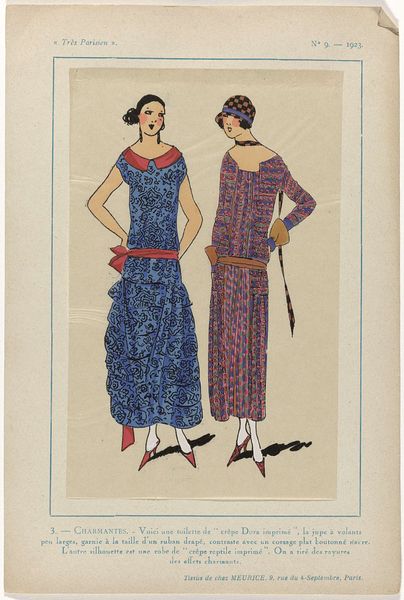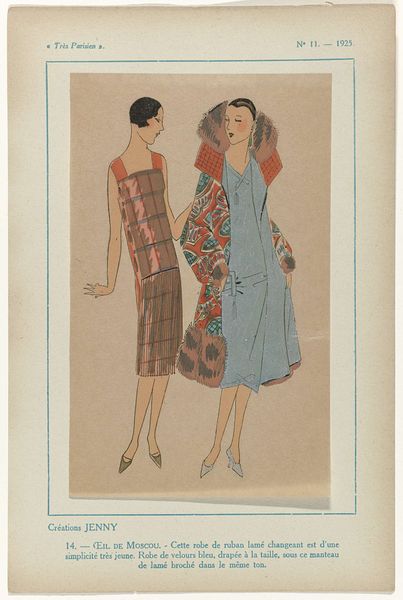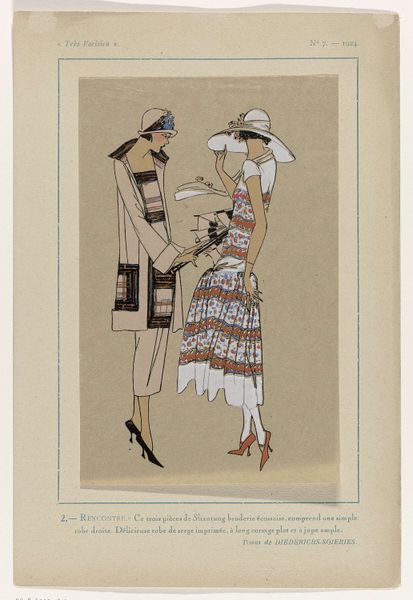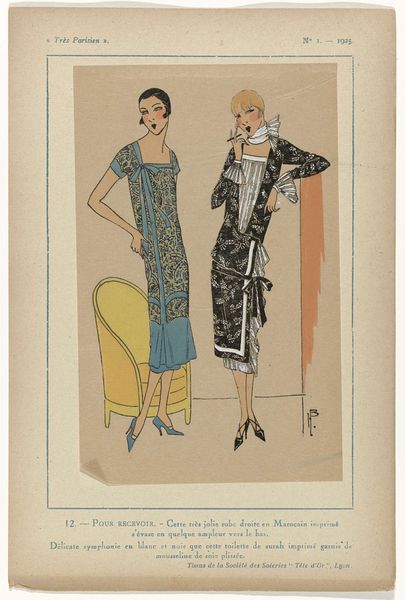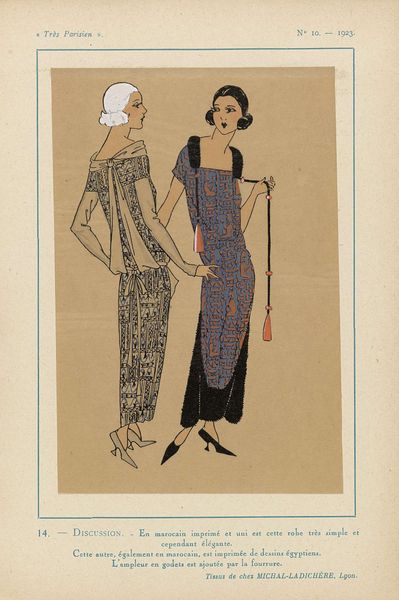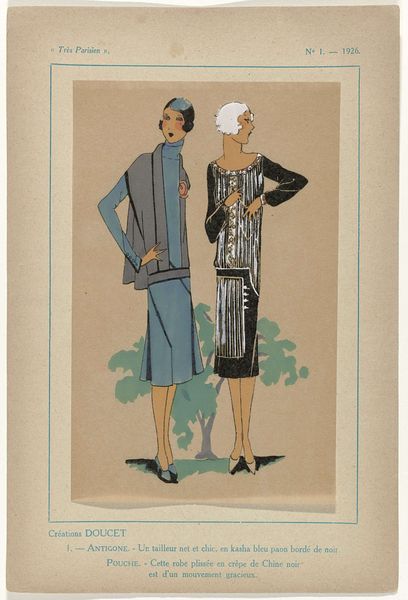
Très Parisien, 1924, No. 6 : Créations MADY / 12.- JOYEUSES. - Cette charmante rob (...) 1924
0:00
0:00
yvluq
Rijksmuseum
Dimensions: height 271 mm, width 183 mm
Copyright: Rijks Museum: Open Domain
Editor: Here we have *Très Parisien, 1924, No. 6: Créations MADY / 12.- JOYEUSES. - Cette charmante rob (...)*, a drawing with watercolor by Y.v. Luq. The stylish figures evoke a certain elegance and freedom, quite characteristic of the Art Nouveau period. What social commentary do you see reflected in this work? Curator: This illustration speaks volumes about the shifting roles of women in the 1920s. We see a move away from the restrictive clothing of previous eras towards more liberated styles— shorter hemlines and looser silhouettes mirrored a broader societal shift where women were demanding more freedom and agency. Consider the context: post-World War I Paris, with women entering the workforce in unprecedented numbers. Editor: So the dresses are more than just fashion statements; they're symbols of this transformation? Curator: Precisely. The "garçonne" look challenged traditional notions of femininity. Fashion became a powerful tool for women to express their independence and assert their presence in a rapidly changing world. And how might the materials listed in the description -- crepe de Chine, organza, silk -- reinforce that reading? Editor: It sounds like those materials would move nicely and be lovely to wear, a contrast from more structured, less forgiving garments of earlier times! This piece makes me consider how clothing design can illustrate social and political movement. Curator: Exactly. By analyzing the cultural context, and understanding how those women wanted to represent themselves we get insight beyond a simple drawing and appreciate this drawing's commentary about early 20th century social progress. Editor: It really gives me a lot to think about regarding fashion as a medium for cultural change.
Comments
No comments
Be the first to comment and join the conversation on the ultimate creative platform.
